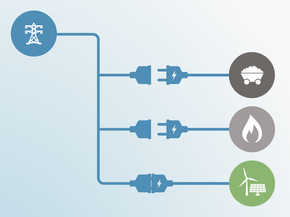Net zero targets
Summary
We evaluate the net zero target as: Acceptable.
Costa Rica announced a net zero target for 2050 in its National Decarbonisation Plan 2018-2050 (Government of Costa Rica, 2019c). The net zero target covers most key elements but fails to meet best practice standards for some of them. Costa Rica’s target covers all sectors and gases and is underpinned by emissions pathway analysis and the communication of strategic goals and emissions targets per sector. Pathways and key measures are identified comprehensively with interim goals attributable to discernible periods to reach net zero through domestic actions and without the use of international credits.
The Costa Rican government fails to provide explicit and transparent assumptions on some key elements. Strikingly, the government provides no information on its intention to establish a formal periodic reviewing cycle of measures and interim targets.
To further improve its strategy, the Costa Rican government could provide separate targets for emission reductions and removals and include emissions from international aviation and shipping. The policy document has also not yet been enshrined in law, which could make targets and measures legally binding and more robust.
Ten key elements
Scope
- Target year – Costa Rica aims to reach net zero by 2050.
- Emissions coverage – The target covers all GHG emissions (i.e., the 7 Kyoto gases: CO2, CH4, N2O, HFCs, PFCs, SF6, NF3) and all sectors of the economy (excluding international bunkers).
- International aviation and shipping – Costa Rica provides no information on its intention to cover emissions from international aviation and shipping.
- Reductions or removals outside of own borders – Costa Rica plans to reach net zero through domestic actions and will not use reductions or removals outside its borders towards its net zero goal.
Target architecture
- Legal status – Costa Rica includes the net zero target in its National Decarbonisation Plan, which is the country’s LTS submitted to the UNFCCC (Government of Costa Rica, 2019c). However, it has not enshrined the target in law domestically yet.
- Separate reduction & removal targets – The National Decarbonisation Plan does not explicitly set separate reduction and removal targets. However, the Plan estimates sectoral emissions by 2050. Energy, industrial processes, agriculture, and waste are estimated to emit 5.5 MtCO2e and the LULUCF sector to remove net 5.5 MtCO2e.
- Review process – Costa Rica has no formal review mechanism, but the National Decarbonisation Plan (NDP) stipulates it will be regularly updated and provide more detailed information on medium- and long-term measures as new conditions arise. Costa Rica has released annual update reports on the implementation of the NDP up to the year 2021, but there have been no new reports since (Dirección de Cambio Climático, 2022).
Transparency
- Carbon dioxide removal – Costa Rica provides a transparent pathway for agriculture, forestry, and other land uses’ (AFOLU) net emissions until 2050.
- Comprehensive planning – The strategy sets periodic goals and provides interim visions across ten “axes of decarbonisation” such as the development of a renewable mobility system, transformation to a zero-emissions vehicle fleet, promotion of a sustainable freight transport, consolidation of the national electricity system, development of high efficiency and low-emission buildings, the transformation of the industrial sector, an integrated waste management system, promotion of highly efficient and low-carbon agri-food systems, consolidation of an eco-competitive livestock model, and facilitating the protection of biodiversity based on nature-based solutions. For each axis, interim goals and activities are outlined for three distinct periods (2019–2022, 2023–2030, 2031–2050). The strategy highlights eight overarching and cross-cutting strategies.
- Clarity on fairness of target – Costa Rica does not provide information on why it considers its net zero target a fair or equitable contribution to the goal of limiting global warming to 1.5°C.
Good practice
The Climate Action Tracker has defined the following good practice for all ten key elements of net zero targets. Countries can refer to this good practice to design or enhance their net zero targets.

Further analysis
Latest publications
Stay informed
Subscribe to our newsletter






